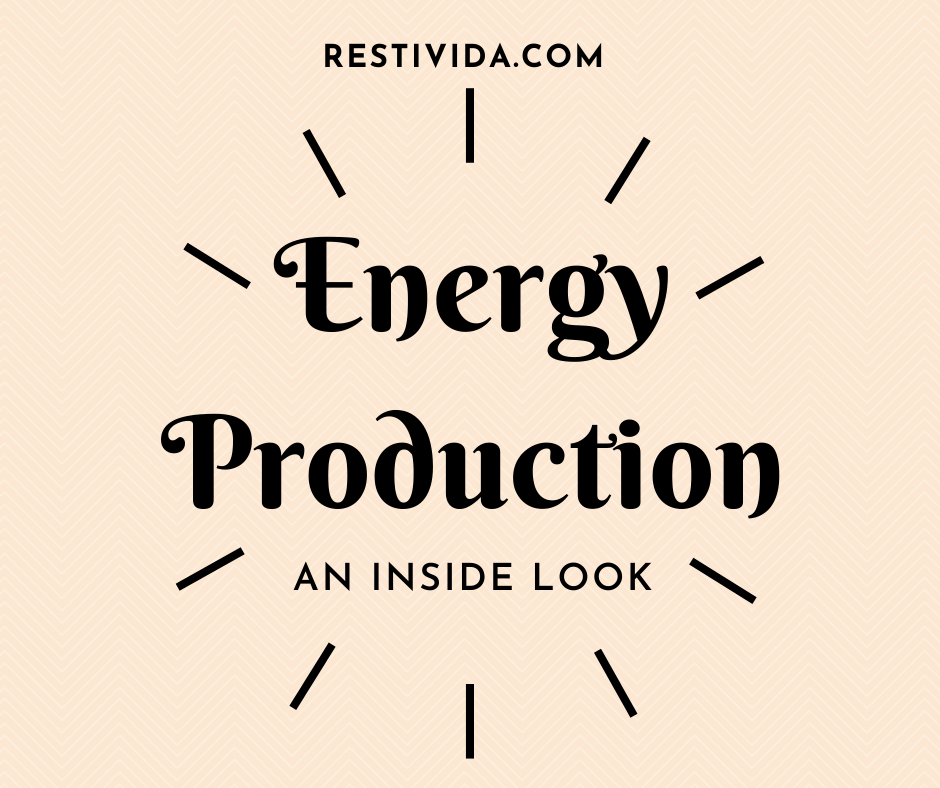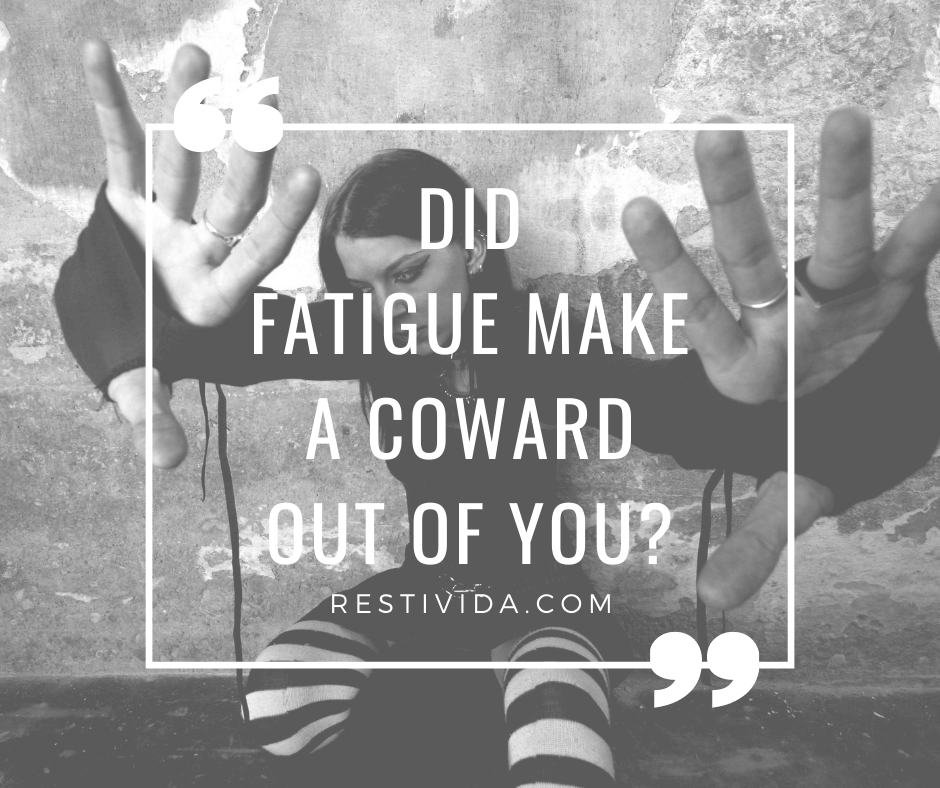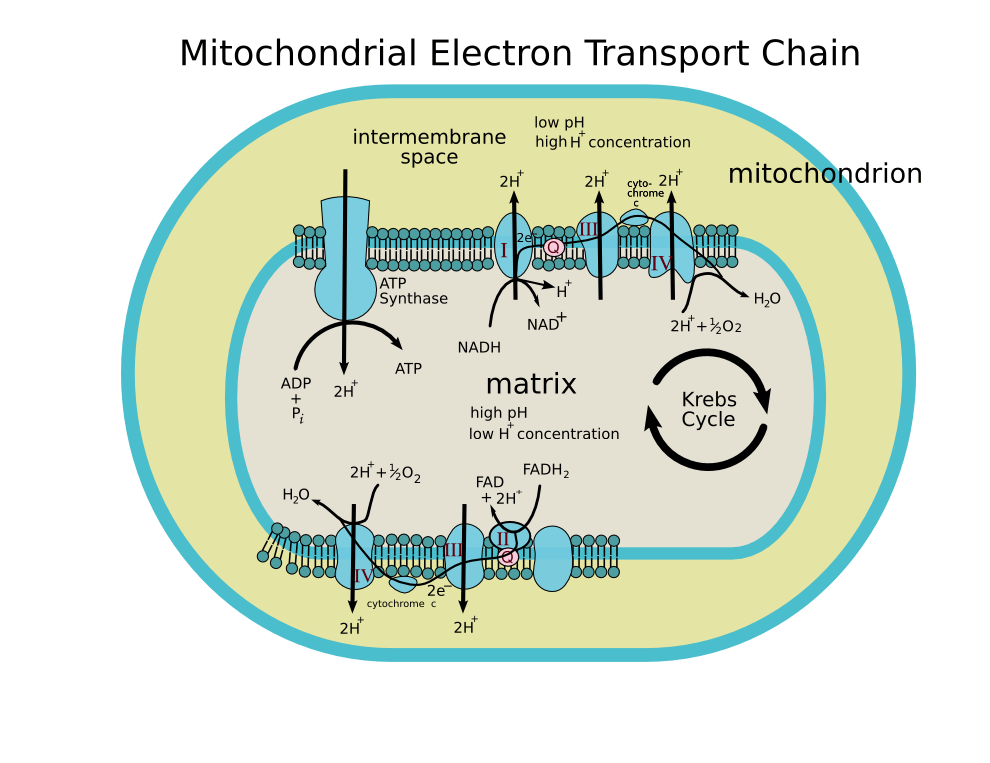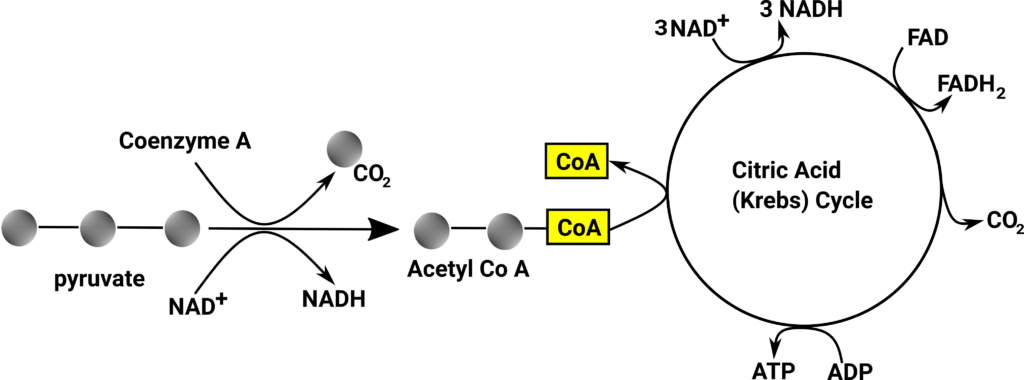Connect energy production to your invisible illness
This blog post takes an in-depth look at energy production from the cellular and atomic level and some terms are a bit technical. It aims to answer a key question: How does energy production and chronic illness relate? BUT ― don’t worry there is nothing you need to memorize and there are no tests and quizzes after. Whew! The aim is to help you understand how your body makes energy and how it may affect your Chronic illness.
- Abnormally fatigued.
Not only is fatigue a persistent symptom, three other leading categories of symptoms are:
- Extreme sensitivity in soft tissue (muscles)
- Cognitive disturbances
- Sleep problems
There are a number of symptoms that may fall into these categories but if you pay close attention to what you are experiencing, most of them will fall within these four.
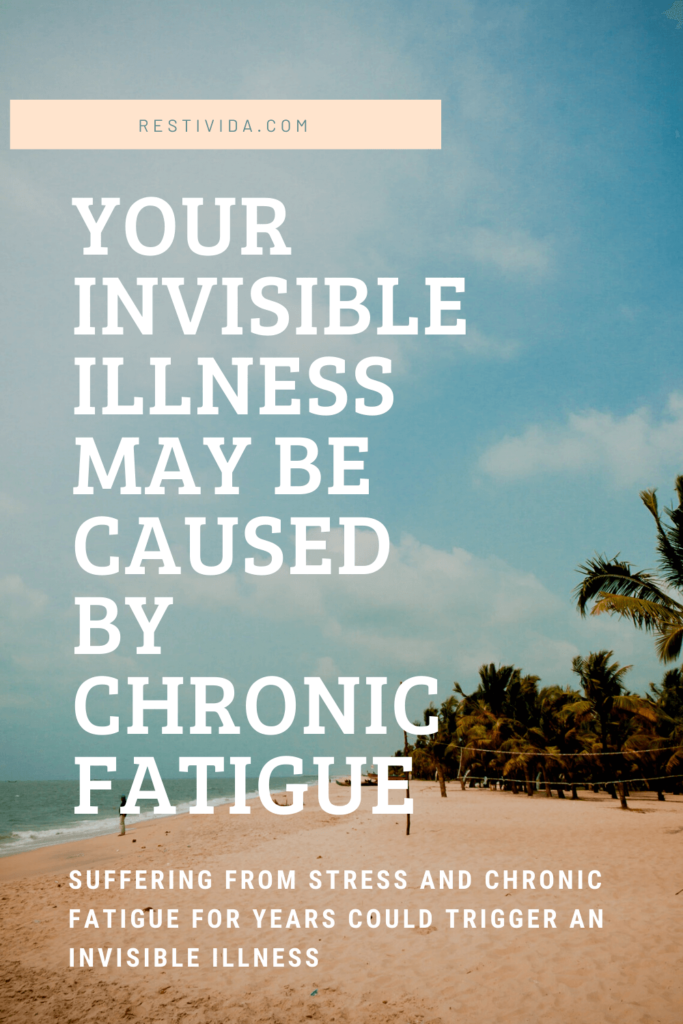
When you’re researching your condition rather than looking at all the symptoms individually it makes sense to group them or take a look at a single one and dissect it. Let’s look at one of these bothersome symptoms:
Energy production and chronic illness go hand in hand
Our body is responsible to create energy from the food we eat. Right? Yes! You are eating food, right? Yes again! But are you creating enough energy? Yes, but not enough. You’re drained by 10 am or some of you even wake up tired!
There is a missing key between eating food and energy creation. What is it? So we ask…What is it that uses the food we eat to create energy in our body? Short answer? The Mitochondria.
What is the mitochondria
The mitochondria is an organelle found in most cells in your bodies. It is believed to have been a free living cell many thousand years ago that was taken up by another cell. The mitochondria was provided with food and it made energy for the cell it resided in and they were inseparable ever since and co-evolved together.
Another interesting thing about the mitochondria is that it retains most of its own DNA in order to create the components that it needs to perform its function in energy creation.
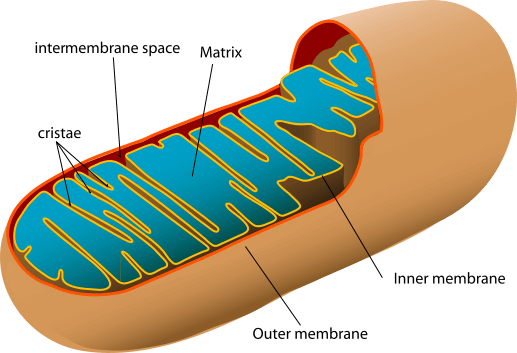
The mitochondria is arranged very simply but it’s form lends to its function very perfectly. There are only two membranes; the inner and outer. The outer membrane holds all the contents together and the inner membrane is folded
and arranged inside the outer membrane, imagine folding a large sheet and putting it into a pillowcase.These folds called cristae maximize the surface inside the mitochondria for maximum energy production. It’s still a large sheet but it’s folded neatly in a bag.
The arrangement of the inner and outer membranes then divides the mitochondria into two sections. The space between the outer membrane and the inner membrane is called the intermembrane space. The space between the folds of the inner membrane is called the matrix.
There are more body cells that contain mitochondria than those that don’t; like the red blood cells which only function is to carry oxygen to energy producing cells. Mitochondria is mostly found in the hundreds and thousands in cells that consume a large amount of energy to function such as the brain, muscle (including the heart) liver and kidneys. Let’s imagine that the mitochondria in these organs are not making enough energy? Could you imagine what would happen?
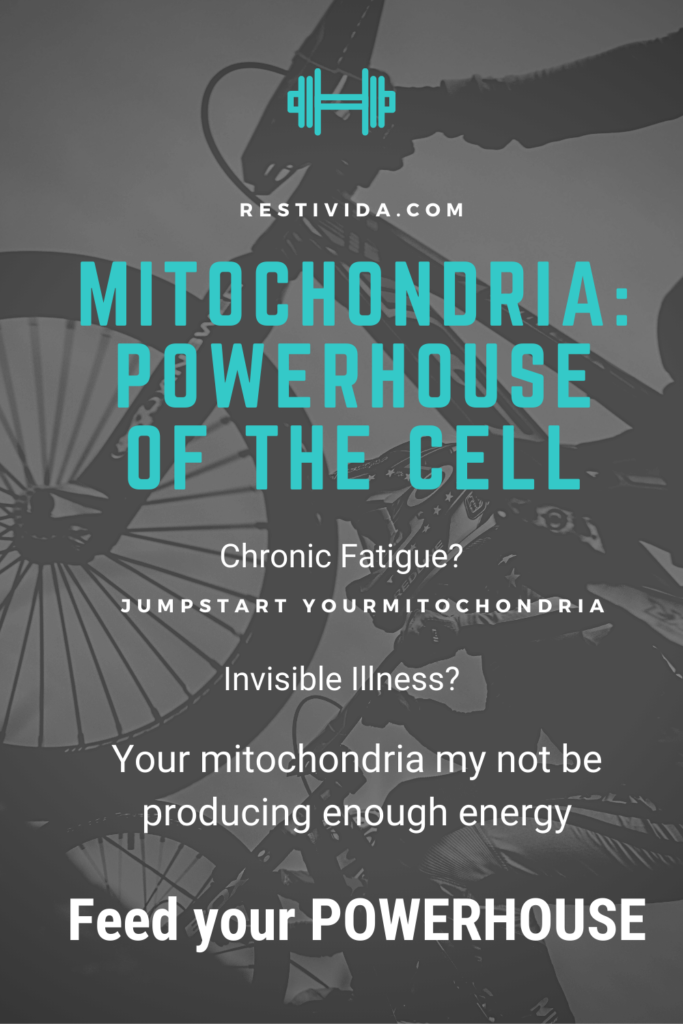
How the mitochondria works:
The mitochondria makes energy in a three step process called aerobic respiration = using oxygen and Respiration = making energy. By separating the process in three different steps the body can slowly “burn” the sugar and maximize the amount of energy produced and minimize wasted energy in the form of heat. The three steps are:
- Glycolysis (Glyco = sugar; Lysis = splitting)
- The Citric Acid Cycle (TCA)/ Krebs Cycle
- Electron Transport Chain (Oxidative phosphorylation= using oxygen to add phosphates)
1. Glycolysis: This is a 10 step (enzyme) process that occurs inside the cell itself not in the mitochondria. Glucose (sugar) is modified and then split into two to be ready for the mitochondria. This is why the relationship between the cell and the mitochondria is so important. The mitochondria is unable to modify or split the glucose on it’s own and the cell is unable to use these split molecules to make energy.
This molecule, called pyruvate is then sent into the mitochondria with the help of Oxygen to enter into The Citric Acid Cycle (TCA)/ Krebs Cycle. Another molecule called NADH (nicotinamide adenine dinucleotide, in case you want to know what it means) is formed and sent to the Electron Transport chain. If you have been looking into supplements to add to your treatment maybe you have encountered NADH or NAD+.
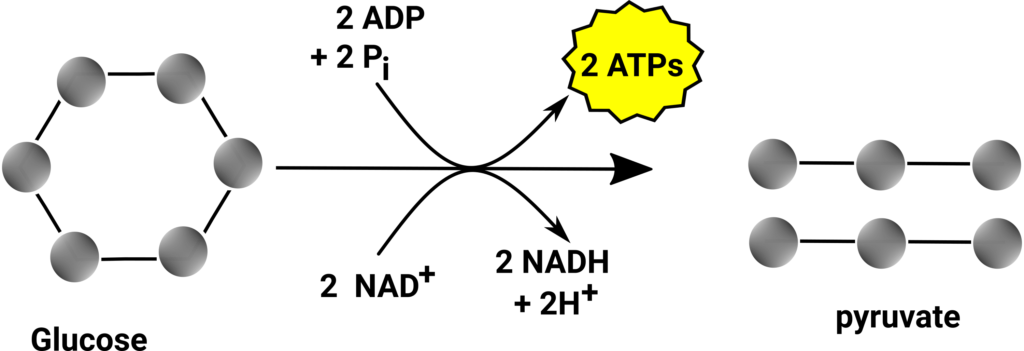
2. The Citric Acid Cycle (TCA)/ Krebs Cycle: Takes place in the matrix of the mitochondria so it’s in the space between the folds of the sheets. This is a series of eight steps that uses three carbon molecules pyruvate made from splitting glucose. The Pyruvate enters the matrix and one of the three carbons is removed and the two-carbon molecule Acetyl-CoA is added to oxaloacetate to form citrate.
This is where the name comes from. The cycle begins with this citrate and ends eight steps later with oxaloacetate and then it goes around again. The products are NADH and FADH2 (Flavin adenine dinucleotide, no need to remember this!). These will also be sent to the Electron Transport Chain.
But what about fats that we eat? Well these are broken down to a simpler form, fatty acidic and then to acetyl which is then attached to l-carnitine to form acetyl-l-carnitine. This is also moved into the mitochondrial matrix where it releases its acetyl group and joins a with a CoA group to form an Acetyl-CoA. The l-carnitine is sent back out of the matrix to get another acetyl group and the cycling and recycling continues.
You may have also seen both L carnitine and acetyl-l-carnitine as a supplement as well! Now you know what it does and knowing this can give you information when making you decision to purchase it or not.
3. Electron Transport Chain (ETC) (Oxidative phosphorylation): This is the third and final step of Aerobic Respiration. It uses a series of proteins that are embedded in the inner membrane (cristae). This step uses NADH and FADH2 to reduce Oxygen (in the O2) form to water (its O– form) and creating a large amount of energy in the process. This happens when NADH and FADH2 are stripped of their hydrogen (H) and frees up some electrons. These are the negatively charged particles moving in one direction and this flow creates electricity which is required to do work…making energy in your body in the form of ATP.
The flow of the electricity is what helps the stripped hydrogen to be moved from the matrix to the intermembrane space through the complexes.
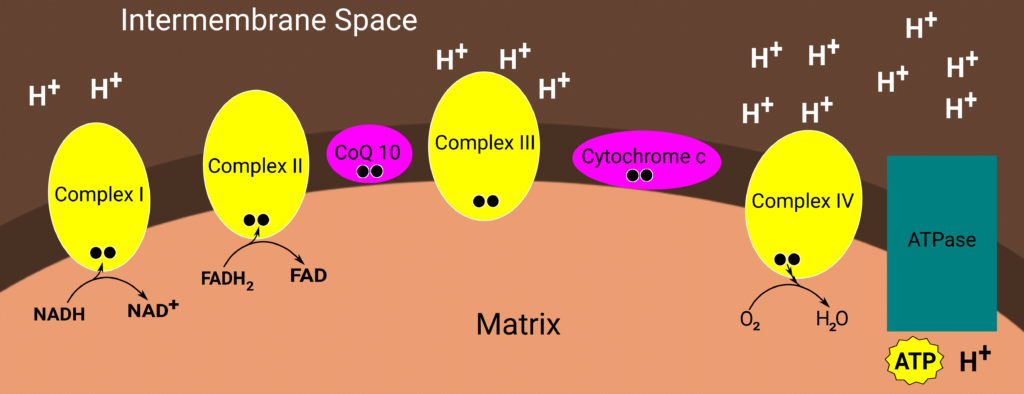
There are 4 protein Complexes in the Electron Transport Chain:
Complex I Is responsible for collecting the high energy electrons from NADH by separating the Hydrogen, which frees up some electrons, turning it to NAD+. This goes back to Glycolysis and the Citric Acid Cycle to get reused and reformed to NADH. The electron enters the Electron Transport Chain and the Hydrogen ion (H+ also called a proton) is moved into the intermembrane space by Complex I.

Complex II is important since FADH2 passes Complex I but its electrons are taken by Complex II and these also enter the Electron Transport Chain FAD+ is sent back to the Citric Acid Cycle to be reused.

CoEnzyme (CoQ10) accepts the electrons from both Complex I and Complex II and delivers them to Complex III.
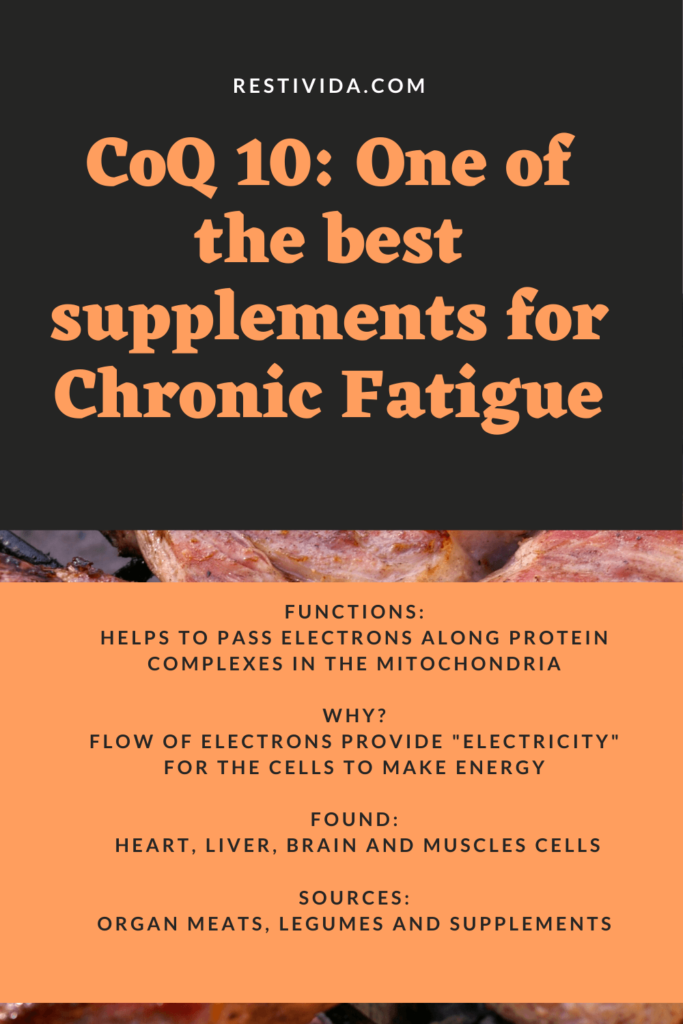
Complex III pumps more protons from the matrix to the intermembrane space and the electrons pass on to Complex IV by cytochrome c.
Interesting fact about cytochrome c is that it is also important for apoptosis or programmed cell death. This is a normal process to get rid of damaged or old cells. With the right (or wrong) signal cytochrome c could start a domino effect that will kill the cell and this signal can affect the cells around it.

Complex IV Uses oxygen that you inhaled to participate in the accepting and passing along of electrons. These are important but used briefly to form an intermediate for electrons to move along the chain. If you’re curious, here’s a deeper look. After it serves its purpose the reduced oxygen then picks up two hydrogen ions from the surrounding matix to make water. More protons are moved into the intermembrane space.

Now here we are. You went through the four complexes and we still have no energy yet. This last step is the synthesis of ATP itself. The actual energy currency. This step is also called the rate-limiting step. Imagine if you will, that all went well in your cells but for some reason this step happens to be faulty. Then the two other processes will have been in vain.
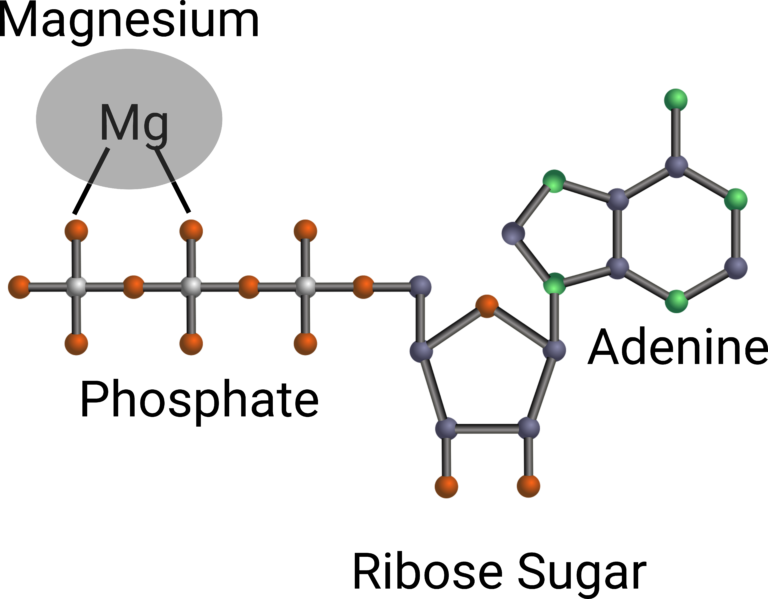
Back to the synthesis. Now you have a large amount of protons in the intermembrane space. This creates an “electrochemical gradient” which just means there are more ions on one side than the other. ATP synthase (synthase = maker of) acts as a proton pump and the movement of the protons causes the ATP synthase to turn like a motor adding phosphate groups to ADP making ATP (Picture).

Scientists are still trying to figure exactly how ATP synthase works. But for now this is all we know. This energy molecule, ATP, is made of three (3) phosphate groups, a ribose sugar, mentioned in our previous blog and an adenine. The two outer phosphate groups are held together and stabilized by a magnesium ion since adding three (3) phosphate groups to each other is a very unstable bond much like a spring pressed down. It just wants to be released! Look at our previous blog to see how magnesium helps in energy production.
This energy in the form of ATP is then released into the cell to provide energy to carry out its cellular function.
That is the aerobic respiration in a nutshell. You can bookmark this page and keep reading the parts that interest you the most. You see, if any of the crucial parts of this cycle is broken, it could have some serious problems in terms of how your body produces energy.
